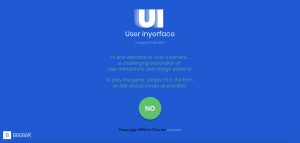Linking Post # 1 – What’s in my Bag?

My Link: https://blogs.ubc.ca/ravneetsandhu/whats-in-my-bag/
Judy Tai’s Link: https://blogs.ubc.ca/etec540judytai/2021/01/18/whats-in-my-bag/
After browsing through some of my colleagues’ blogs, Judy’s “What’s in your Bag” post resonated with me. Perhaps it was because of its sense of familiarity. By examining the contents in her bag, I noticed that even though some of our items were different, the sentiment was similar. Like me, Judy mentions that she teaches primary students online so a laptop is key. I can connect with her thoughts about online teaching which almost makes me feel as if I might know her. Unlike Judy, though I’m teaching online, I am expected to be on site. Therefore, masks and sanitizer are two components in my bag that are missing from Judy’s. It is evident that we both incorporate print and digital literacies into our daily lives. Closer to the end of her post, Judy mentions that her “Office Bag” doesn’t intrude her privacy. I am a very private person and based on this statement, I assume that Judy is too. I’d prefer to share my work bag as opposed to my everyday bag or my gym bag which would reveal more personal information about me. Judy and I used the same web authoring tool to share the items in our bags. I wonder what the contents of our everyday bags would say about us.
Linking Post # 2 – Voice-to-Text

My Link: https://blogs.ubc.ca/ravneetsandhu/voice-to-text-task/
Jasmeet Hothi’s Link: https://blogs.ubc.ca/jhothietec540/2021/01/31/voice-to-text/
I found Jasmeet’s voice-to-text narration post to be noteworthy. To reiterate what Jasmeet said, it took everything in me not to edit the text. For one, I found it tough to speak for five minutes continuously without losing my train of thought, especially because I was trying to recall past events in the process. Like her, I didn’t say the punctuation aloud in an effort to nurture an organic flow. In reading her post, I realized how different a scripted story can be compared to an unscripted story. As students, we have been accustomed to scripting our academic writing pieces. I think that this task felt uncomfortable because I am so used to editing my work until the last minute to ensure that it represents my thoughts adequately. I didn’t feel satisfied with the output produced. Jasmeet mentions the lack of emotion that is present in the voice-to-text output. This is an element that I hadn’t considered in my own post. Now that I look back at my post, I was speaking with a lot of expression, but the emotion is completely lost in the story. As I scrolled through Jasmeet’s blog, I noticed that we used different voice-to-text applications. I wonder how my output would have differed if I had used the same application that she did. Would it have produced less mistakes either way? Or would the errors in our stories still remain fairly consistent? This is a future experiment that I will have to try out.
Linking Post # 3 – Twine Story

My Link: https://blogs.ubc.ca/ravneetsandhu/twine-story/
Jennifer Riego’s Link: https://blogs.ubc.ca/etec540jenniferr/2021/02/16/task-5/
This week, Jennifer’s Twine story captured my attention. I was drawn to the theme of her story, the anxious mind. I feel that our processes in the creation of this game had many similarities. Like me, Jennifer chose to use pen/paper for the initial stages of her story production. This made the creation process run more smoothly. After our story webs had been created, we typed up our scripts. Once this step was complete, we had to review the story to make sure that it flowed. One thing that differed between the layouts of our stories was that Jennifer included visuals which made her story more appealing than mine. Unfortunately, I wasn’t able to figure out how to incorporate images. I’ve had moments in which I’ve felt like the character in her story and I think that this drew me to it. I like the way that her story ends because it sends an important message to users. The negative thoughts that arise in our minds often paint a very different picture than what is actually happening in reality. I like that at the end of the story, Siouxsie was able to overcome her anxiety and deal with reality. The plot of my story is quite different from Jennifer’s and certain outcomes are much less favourable. It is more of an adventure story in which different paths lead to either survival or death. A quote that Jennifer makes mention of that stood out to me is “because every path may define an equally convincing and appropriate reading, the hypertext’s multiplicity (or overdetermination) suggests a changed relationship between the reader and the text” (p.35). It suggests that hypertext intends to create a customized experience for each reader.
Bolter, J. D. (2001). Writing space: computers, hypertext, and the remediation of print. New York, NY: Routledge.
Linking Post # 4 – Emoji Story

My Link: https://blogs.ubc.ca/ravneetsandhu/an-emoji-story/
Kirsten’s Link: https://blogs.ubc.ca/narration4transformation/
As I browsed through my colleagues’ posts, it was interesting to see the wide assortment of emojis. I could pluck out which emoji stories were created using an iOS device in comparison to an Android device. I was quickly drawn to Kirsten’s emoji story post. Having just watched Queen’s Gambit not too long ago, I felt that Kirsten was able to convey her story through emojis very clearly. As an IOS user, I prefer the emojis on my iPhone. I noticed that I was more engaged with stories that incorporated these emojis compared to the ones created using an Android device. After reading her post, I felt that my thought process was similar to Kirsten’s in working through this task. Some of her ideas resonated with me, but I didn’t include them in my own post. She mentions the restriction to not use any words made her feel disadvantaged in the realm of communication. I also felt this way when trying to convey my thoughts. I feel that my Kirsten’s post broadened my perspectives as well. For instance, I realized that reflecting on the emotional experiences of the main events helped make this task a lot easier for me as well. Kirsten does a thorough job going through her experience with this task. As I scrolled down, I noticed that her writing style is consistent with that of a blog. At times, I feel that I struggle to write as a blogger. Perhaps this is because of my limited experience with it.
Linking Post # 5 – Golden Curation Record

My Link: https://blogs.ubc.ca/ravneetsandhu/golden-record-curation/
James Seaton’s Link: https://blogs.ubc.ca/etec540jseaton/2021/03/07/golden-record-curation-task-8/
James Seaton’s blog post for the Golden Curation Record task was intriguing because the reasoning behind our choices was so different. James wanted to include recordings that were pleasant to the ear treating the record kind of like a talent show. This is something that I hadn’t really considered when making my selections. I think that this would have been a good criterion to use in order to narrow the list down. To me the most important thing was to include sounds that portray the diversity of life and culture on land, regardless of whether the music was pleasing to the ear. I also tried to choose tracks that evoked strong emotions. I felt that this was important. James mentions that the inclusion of different languages was also important to him. As well, he speaks about expressing a sense of community through his selections. I noticed that our selections are not that similar. Perhaps this is because the premise behind our choices was different.
Linking Post # 6 – Attention Economy


My Link: https://blogs.ubc.ca/ravneetsandhu/attention-economy/
Scott Richmond’s Link: https://blogs.ubc.ca/scottrichmond/2021/03/17/task-10-attention-economy/
This week, the ideas noted in Scott’s blog post resonated with me. It appears that we were both drawn to similar elements of the game. For instance, Scott mentions wanting to click the giant green button despite the word “NO” on it. I also thought that it said “GO” for a moment. Like Scott, I struggled to fill out the form with age, date of birth etc. I think that the time each part of the task took was the most frustrating. We are so used to breezing through these forms in the blink of an eye. Unfortunately, because it wasn’t user-friendly, this task required careful attention which we weren’t ready to provide.
Scott mentions taking off his critical thinking hat to work through the task. I actually put on my critical thinking hat, but it didn’t seem to help me get through the task. I was still stuck on certain parts of the form for long periods of time. It took me 21 minutes to complete this task. In reading through the post, I was curious to know how long it took Scott. Near the end of his post, it is suggested that “our life is what we pay attention to” and this really stood out to me. The way that we think, our actions, who we are and how we feel is the result of what we focus on. The components that I focused on while filling out this form were meant to slow me down.